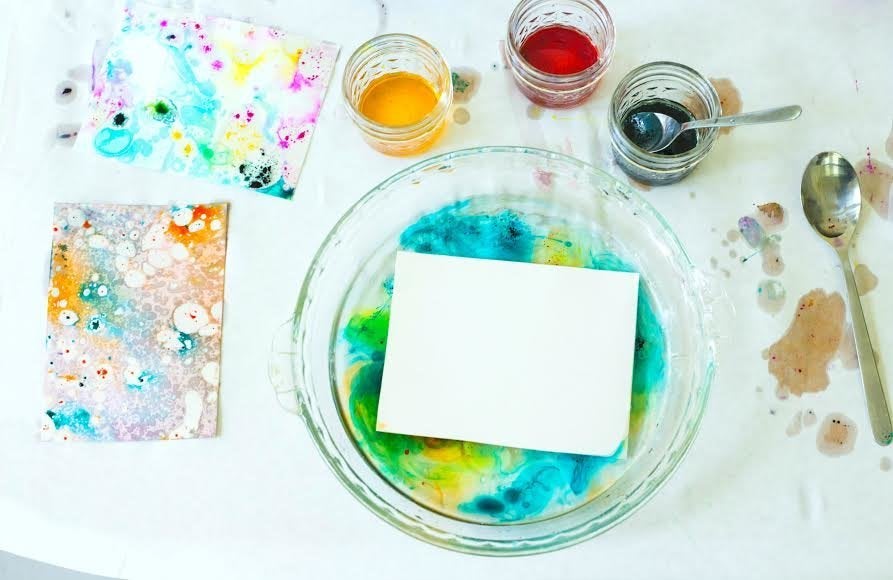When it comes to doing crafty activities over the Easter holidays, eggs are a good place to start. Decorated and dyed eggs could be used as decorations for the dinner table, as a way to jazz up the house or simply just something to do to pass time and keep the kids entertained.
Depending on how crafty you’re feeling (and how messy you want to get), you could either paint the eggs using acrylic paint or dye them to get a rainbow effect.
Here are some tips and advice for crafting over the school holiday:

How To Decorate Easter Eggs
You will need: Hard-boiled eggs, acrylic paint, paint brushes. Optional: drawing pin, bowl and straw.
If you choose to decorate Easter eggs with your kids using paint, the easiest method is to hard-boil the eggs then let your kids go wild with their decorating. However for older children - or for those who have a little more patience - you could try blowing eggs. You’ll need to use the drawing pin to pierce the shell at either end of your egg. The bigger the hole in the shell, the easier it will be to blow out the yolk and white. Hold the egg over a bowl, and either blow hard over the more pointed end of the egg or through a straw into the hole. Once all the egg inside has run out, rinse the shell under warm water and leave to dry.

When it comes to painting the shells, keep some real egg boxes to position them in for your kids. Use acrylic paint because it covers well without loads of layers. Ensure each layer is dry before kids paint on another pattern. Once you have painted all parts of the egg you can see, wait for it to dry and then turn it upside down to do the bottom.
Another hack to make a stand, as demonstrated by the Purple Pumpkin blog, is to cut up a loo roll into rings that stand a few inches tall, which you can place your egg in. This stand is shorter, so more of the egg can be painted in one go.
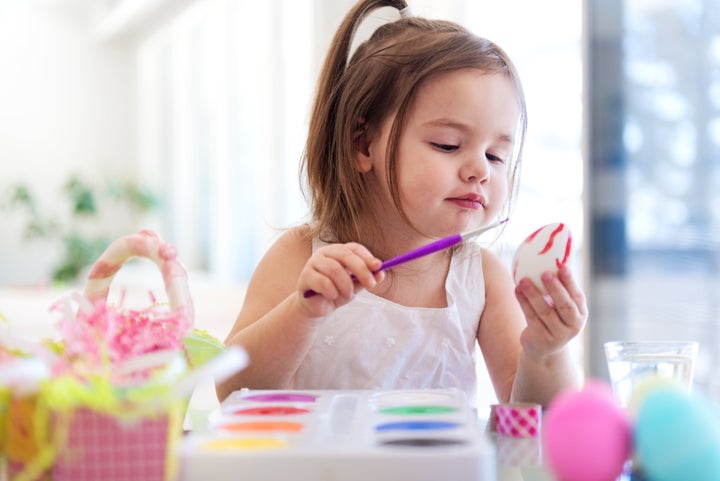
How To Dye Easter Eggs
You will need: Hard-boiled eggs, food colouring gel, vinegar, bowls OR vegetables, turmeric and coffee to create natural dye.
Another way to get crafty with eggs is to dye them. Does this mean you can eat them afterwards? Potentially. If you buy normal food colouring to dye the eggs, they will be safe to eat. However if you leave the hard-boiled eggs out at room temperature for more than several hours, Good Housekeeping Institute’s culinary director Susan Westmoreland said it’s best not to eat them and perhaps just use them as decorations.
So how do you actually do it? There are two options. The first is to use food colouring; Kasey Schwartz, 40, blogs at All Things Mumma and loves doing crafts with her kids - Ella, 12, Andrew, nine, and Sydney, five, - especially around holidays such as Easter. Last year, she and her kids decided to make bright and bold decorative eggs for the occasion.
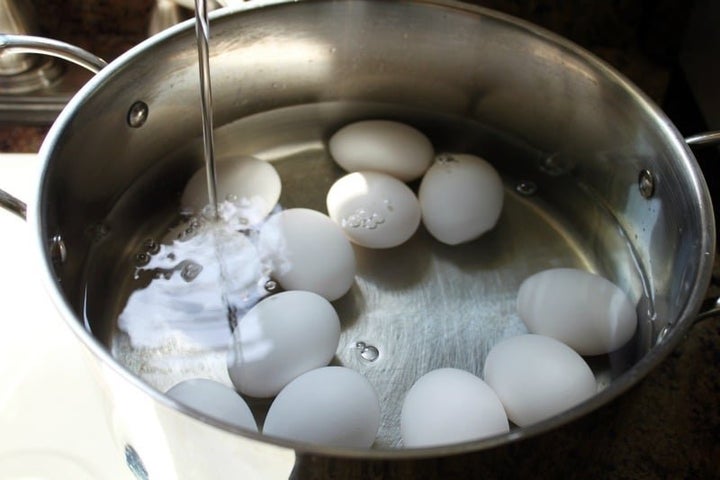
Once you’ve hard-boiled your eggs, you’ll need to mix boiling water with vinegar and carefully add coloured food dye. Find the specific measurements Kasey used on the step-by-step instructions on her blog.
“Some great tips for this craft would be to start with hard-boiled eggs that have cooled completely,” Kasey says. “You can even hard-boil them the day before (or hours before) and let them chill in the refrigerator before dying. I always make a few extra in case the kids break one so they each have plenty to work with.”
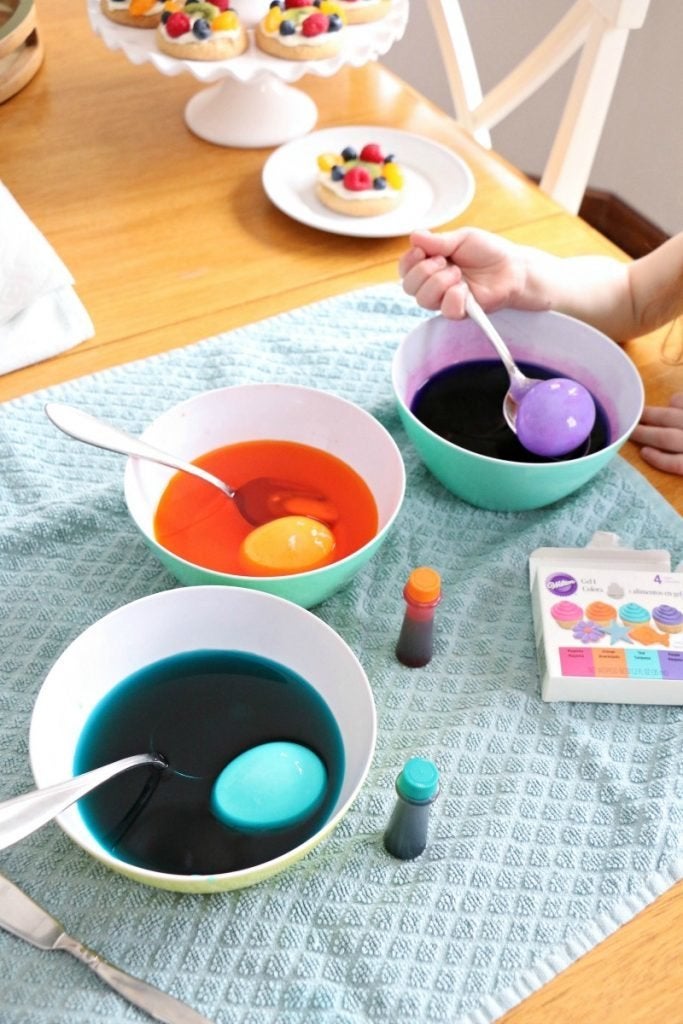
She adds: “Also, once you prepare your dye, make sure to lay down a protective tablecloth or newspapers where you’ll be working or the dye will end up staining your table.” To finish, dry your eggs completely on a wire rack with paper towels or newspapers underneath the rack before handling. Read the full step-by-step instructions here.
If you don’t have food colouring, another way to dye your eggs, is to use natural colours from foods in your house. Put the food in a pan with water and bring to the boil. Simmer for around 30 minutes. Annabel Langbein explains how to do this on her Free Range Life blog. She uses foods such as beetroot, kale, red cabbage, turmeric, coffee and spinach to create the different colours. The chart below shows the types of food that will create different coloured Easter eggs.
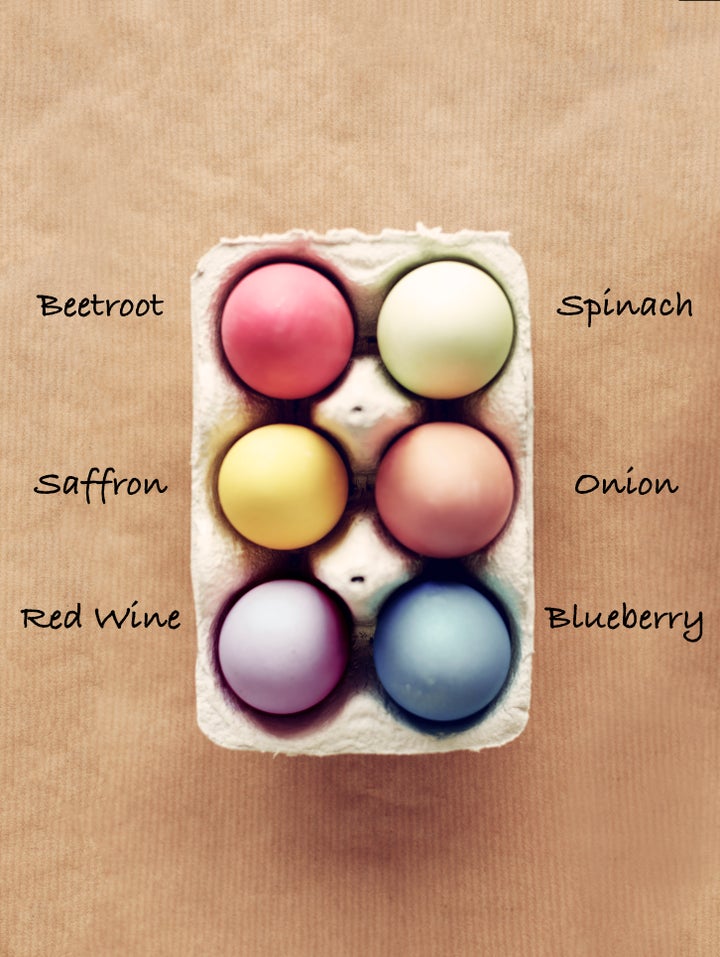
Happy egg making! If you want to share your creations, drop us an email on ukparents@huffpost.com - we’d love to see.
